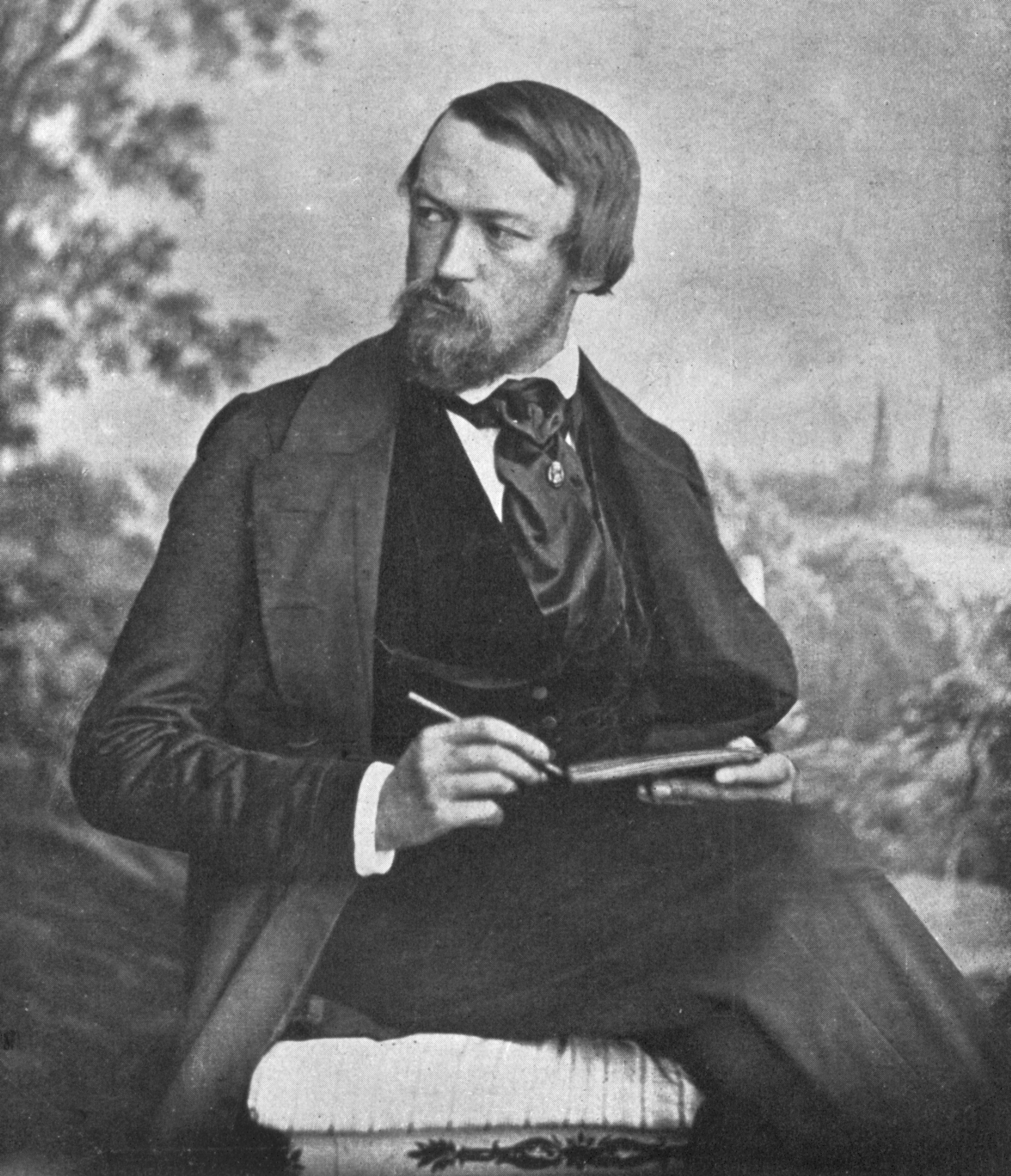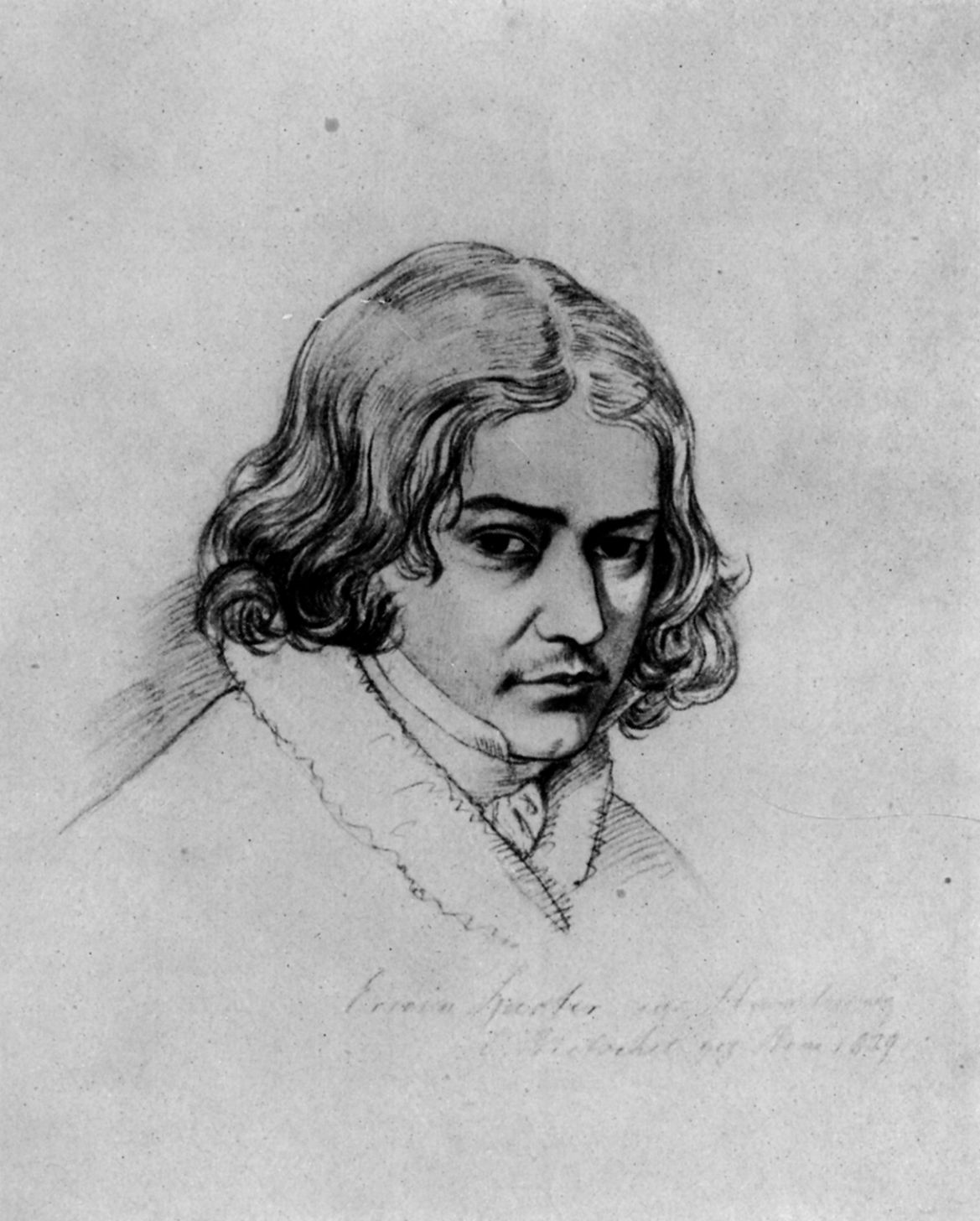|
Johannes Michael Speckter
Johannes Michael Speckter (5 July 1764, Uthlede - 1 March 1845, Hamburg) was a German lithographer and graphics collector. Life and work His father was a teacher from Hanover. Around 1785, he moved to Hamburg. Under the influence of the architect, , he intiially studied architecture, but then switched to studying mathematics at the . In the 1790s, he turned to the business trades, but was also active as a collector and dealer of copper engravings and etchings. In 1818, he created the first lithographic firm in Northern Germany. Together with Heinrich Joachim Herterich, who brought a team of specialists from Munich, he established "Hamb. Steindruckerei Speckter & Herterich" ("Speckter & Co" after 1829). The company proved to be very successful. Their regular clients included Friedrich Carl Gröger and Heinrich Jacob Aldenrath, who brought their portrait lithographs there to be printed. In 1834, the company was taken over by his son, Otto Speckter. His other son, the painter ... [...More Info...] [...Related Items...] OR: [Wikipedia] [Google] [Baidu] |
Otto Speckter
Otto Speckter (9 November 1807, in Hamburg – 29 April 1871, in Hamburg) was a German etcher and illustrator. Life and work He was the son of Johannes Michael Speckter, whose lithographic company he took over in 1834. His brother was the painter, Erwin Speckter. He initially made himself known through lithography, then began illustrating books with arabesques, vignettes and figure drawings. He illustrated '' Luther's Small Catechism'', ''Der Pilgerfahrt der Blumengeister'' (Pilgrimage of the Flower Spirits) by Adolf Böttger, ''Quickborn'' by Klaus Groth, ''Hannchen und die Küchlein'' (Hanna and the Cakes) by Christian August Gottlob Eberhard, ''Hanne Nüte'' by Fritz Reuter, and ''50 Fabeln für Kinder'' (Fifty Fables for Children) by , which was translated into English, by Mary Howitt. as ''Otto Speckter’s Fable Book''. He was one of the founding members of the . He was married to Marie Auguste, née Bergeest (1824-1899). Their son, , also became an illustrator, but ... [...More Info...] [...Related Items...] OR: [Wikipedia] [Google] [Baidu] |
German Businesspeople
German(s) may refer to: * Germany (of or related to) **Germania (historical use) * Germans, citizens of Germany, people of German ancestry, or native speakers of the German language ** For citizens of Germany, see also German nationality law **Germanic peoples (Roman times) * German language **any of the Germanic languages * German cuisine, traditional foods of Germany People * German (given name) * German (surname) * Germán, a Spanish name Places * German (parish), Isle of Man * German, Albania, or Gërmej * German, Bulgaria * German, Iran * German, North Macedonia * German, New York, U.S. * Agios Germanos, Greece Other uses * German (mythology), a South Slavic mythological being * Germans (band), a Canadian rock band * "German" (song), a 2019 song by No Money Enterprise * ''The German'', a 2008 short film * "The Germans", an episode of ''Fawlty Towers'' * ''The German'', a nickname for Congolese rebel André Kisase Ngandu See also * Germanic (other) ... [...More Info...] [...Related Items...] OR: [Wikipedia] [Google] [Baidu] |
1845 Deaths
Events January–March * January 10 – Elizabeth Barrett receives a love letter from the younger poet Robert Browning; on May 20, they meet for the first time in London. She begins writing her '' Sonnets from the Portuguese''. * January 23 – The United States Congress establishes a uniform date for federal elections, which will henceforth be held on the first Tuesday after the first Monday in November. * January 29 – '' The Raven'' by Edgar Allan Poe is published for the first time, in the ''New York Evening Mirror''. * February 1 – Anson Jones, President of the Republic of Texas, signs the charter officially creating Baylor University (the oldest university in the State of Texas operating under its original name). * February 7 – In the British Museum, a drunken visitor smashes the Portland Vase, which takes months to repair. * February 28 – The United States Congress approves the annexation of Texas. * March 1 – President John Tyler signs a bill au ... [...More Info...] [...Related Items...] OR: [Wikipedia] [Google] [Baidu] |
1764 Births
1764 ( MDCCLXIV) was a leap year starting on Sunday and is the fifth year of the 1760s decade, the 64th year of the 18th century, and the 764th year of the 2nd millennium. Events January–June * January 7 – The Siculicidium is carried out as hundreds of the Székely minority in Transylvania are massacred by the Austrian Army at Madéfalva. * January 19 – John Wilkes is expelled from the House of Commons of Great Britain, for seditious libel. * February 15 – The settlement of St. Louis is established. * March 15 – The day after his return to Paris from a nine-year mission, French explorer and scholar Anquetil Du Perron presents a complete copy of the Zoroastrian sacred text, the '' Zend Avesta'', to the ''Bibliothèque Royale'' in Paris, along with several other traditional texts. In 1771, he publishes the first European translation of the ''Zend Avesta''. * March 17 – Francisco Javier de la Torre arrives in Manila to become the ... [...More Info...] [...Related Items...] OR: [Wikipedia] [Google] [Baidu] |
Alfred Lichtwark
Alfred Lichtwark (14 November 1852 – 13 January 1914) was a German art historian, museum curator, and art educator in Hamburg. He is one of the founders of museum education and the art education movement. Background and career Alfred Lichtwark was the son of Herr Johann Karl Ernst Lichtwark, a minor lord who owned the Reitbrook Mill. From his father's first marriage he had three half-siblings. Alfred Lichtwark's mother Johanne Helene Henrietta (née Bach) (1829–1909) was believed to be a direct descendant of the composer Johann Sebastian Bach. Lichtwark had a happy childhood in the countryside with his siblings Hans and Marianne (1857–1930) until 1858, when his father was forced to sell the mill for financial reasons. The family moved to Hamburg, where his father ran an inn which fared poorly, and the family lived in poverty. Lichtwark, who attended the civil school, proved to be very talented and versatile, helping students after school as an assistant teacher. In ... [...More Info...] [...Related Items...] OR: [Wikipedia] [Google] [Baidu] |
Hamburger Kunsthalle
The Hamburger Kunsthalle is the art museum of the Free and Hanseatic City of Hamburg, Germany. It is one of the largest art museums in the country. The museum consists of three connected buildings, dating from 1869 (main building), 1921 (Kuppelsaal) and 1997 (Galerie der Gegenwart), located in the Altstadt district between the Hauptbahnhof (central train station) and the two Alster lakes. The name ''Kunsthalle'' indicates the museum's history as an 'art hall' when it was founded in 1850. Today, the museum houses one of the few art collections in Germany that cover seven centuries of European art, from the Middle Ages to the present day. The Kunsthalle's permanent collections focus on North German painting of the 14th century, paintings by Dutch, Flemish and Italian artists of the 16th and 17th centuries, French and German drawings and paintings of the 19th century, and international modern and contemporary art. History The museum collection traces its origin to 1849, when it ... [...More Info...] [...Related Items...] OR: [Wikipedia] [Google] [Baidu] |
Kupferstichkabinett (Hamburg)
Kupferstichkabinett is the German word for print room. It may also refer to: *Kupferstichkabinett Berlin *Kupferstich-Kabinett (Dresden) The Kupferstich-Kabinett (English: Collection of Prints, Drawings and Photographs) is part of the Staatliche Kunstsammlungen (State Art Collections) of Dresden, Germany. Since 2004 it has been located in Dresden Castle. [...More Info...] [...Related Items...] OR: [Wikipedia] [Google] [Baidu] |
Erwin Speckter
Erwin Speckter (18 July 1806, Hamburg - 23 November 1835, Hamburg) was a German painter, often associated with the Nazarene movement. Life His father was the lithographer, Johannes Michael Speckter. During the Siege of Hamburg, his family sought refuge at the estate of a local banker. Another lithographer, Heinrich Joachim Herterich, was living there at the time and his collection inspired Erwin's first interest in art. His father provided some of his first painting lessons, along with the local artist Friedrich Carl Gröger, while he attended a famous private school operated by Leonhard Wächter. In 1823 (with the support of Carl Friedrich von Rumohr) he, his brother and Carl Julius Milde, another aspiring painter, travelled through Northern Germany, studying the ancient monuments, but he was also influenced by seeing the works of Friedrich Overbeck in Lübeck. Two years later, he studied in Munich with Peter von Cornelius and assisted him with his decorations for the loggia at ... [...More Info...] [...Related Items...] OR: [Wikipedia] [Google] [Baidu] |
Heinrich Jacob Aldenrath
Heinrich Jakob Aldenrath (17 February 1775, Lübeck – 25 February 1844, Hamburg) was a portrait painter, miniaturist, and lithographer. Life Aldenrath was a pupil of Johann Jakob Tischbein and of Friedrich Carl Gröger, with whom he developed a friendship which lasted until Gröger's death in 1838. Together they attended the academies of Berlin, Dresden, and Paris. After periods in Lübeck, Kiel, and Copenhagen, they finally settled at Hamburg in 1814, and became celebrated as portrait painters. Aldenrath died in Hamburg in 1844. It is said that he painted the portrait of the King of Denmark no less than thirteen times. His lithographs include portraits of Friedrich Karl Gröger, the poets Klopstock and Count Stolberg, Adolphus, Duke of Cambridge, and his own self-portrait. See also * List of German painters This is a list of German painters. A > second column was into info box --> * Hans von Aachen (1552–1615) * Aatifi (born 1965) * Karl Abt (1899–1985) * ... [...More Info...] [...Related Items...] OR: [Wikipedia] [Google] [Baidu] |
Uthlede
Uthlede is a village and a former municipality in the district of Cuxhaven, in Lower Saxony, Germany. Since 1 January 2014, it is part of the municipality Hagen im Bremischen. Uthlede belonged to the Prince-Archbishopric of Bremen, established in 1180 AD. In 1648 the Prince-Archbishopric was transformed into the Duchy of Bremen, which was first ruled in personal union by the Swedish Crown - interrupted by a Danish occupation (1712–1715) - and from 1715 on by the Hanoverian Crown. The Kingdom of Hanover incorporated the Duchy in a real union Real union is a union of two or more states, which share some state institutions in contrast to personal unions; however, they are not as unified as states in a political union. It is a development from personal union and has historically be ... and the Ducal territory, including Uthlede, became part of the new Stade Region, established in 1823. References Former municipalities in Lower Saxony {{Cuxhaven-geo-stub ... [...More Info...] [...Related Items...] OR: [Wikipedia] [Google] [Baidu] |
.jpg)



.ajb.jpg)


.jpg)